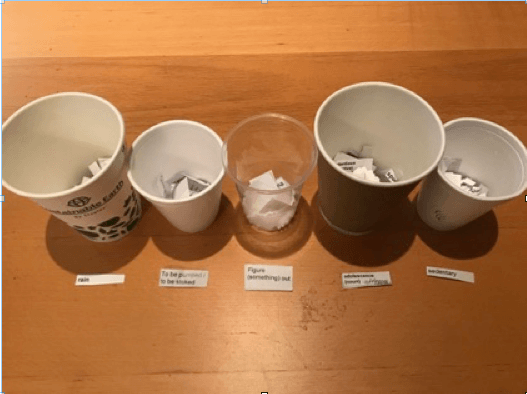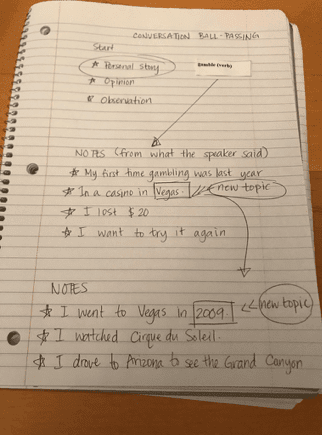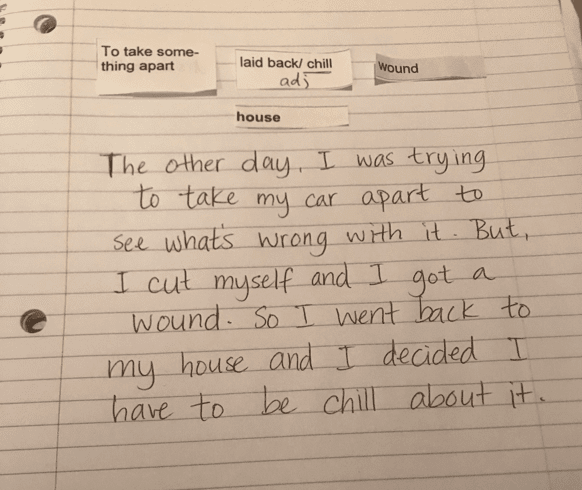I teach English immersion lessons in Toronto, and the number one request I receive from my students is to include more speaking practice into my lessons, as the majority of my students have difficulties conversing with native speakers.
When I tell my students that a conversation is like the simple activity of passing the ball, the thought of conversing in English becomes much easier.
When someone speaks, they are “passing a ball” to the person they are having a dialogue with.
So when it’s their turn to reply, they are “passing the ball back” and they relate their own experience with what they understood from their partner.
Then it’s their partner’s turn to do the same, and the activity continues.
This activity encourages full participation in the conversation.
If students really challenge themselves, they eventually lead the conversation.
About the Author: Melissa Alvia is an experienced ESL and public school teacher, who completed OnTESOL’s 120-hour TESOL course. All combined, Melissa has 7 years of TESOL experience in Canada and abroad.
How to Begin The Ball Passing Activity
For this particular lesson, it’s crucial to start simple. Teachers can work their way up when appropriate.
Materials: strips of paper with a mix of different kinds of vocabulary written on them. I put these papers in 5 separate cups (see image):
Cup 1 (simple words; e.g. “rain”)
Cup 2 (slang; e.g. “to be pumped”)
Cup 3 (phrasal verbs; e.g. “figure (something) out”)
Cup 4 (mixed levels — could be from level 1-5 e.g. “adolescence”)
Cup 5 (academic words; e.g. “sedentary”)
Students have to draw a paper from any cup and use the word to start off a conversation.
Level 1:
I start off by giving students ideas on what they can say. These are the three speech methods they can use:
Personal story: their own stories or stories from books, movies, or their friends.
Opinion: their own opinion or opinions from books, movies, or their friends.
Observations: common opinion in a group/society.
I then do a demonstration. If the topic they drew is “book”, I would say something like, “My favorite book is ‘Catcher in the Rye’ because I like the story. I read that book in high school. At that time, I really didn’t like reading, so I didn’t expect that I would love the book. I haven’t read that book in a long time. Maybe my opinion about it will be different now”.
When it’s the students’ turn to reply, I tell them to jot down the points that they remember from what I said. Then, they have to choose one word from the list and that will be their topic that they have to talk about (using the 3 methods they had just learned). This “conversation ball passing” continues.
Level 2:
Students have to choose multiple words, from different cups. They have to use and include all of these words to invent their own story, using the 3 speech methods. This is followed by the “conversation ball passing”.
The objective for this level is to show students that everything is connected and to add more context to the vocabulary they already have in their mental lexicons.
This is when students develop confidence in their communication skills.
Do you want to teach English abroad? Get free job placement in the top destinations! Our featured TESOL / TEFL jobs are EPIK (South Korea) and EF English First (China).
Tools for Maintaining a Conversation in English
Level 3:
Students have to lead and maintain a conversation. There are 2 “tools” I teach:
Asking questions: students have to ask questions to exercise their listening. A maximum of 2 is enough, to avoid “interrogating” conversations. They reply by relating their own experiences.
Changing the topic: to change the direction of the conversation, students have to choose a new word from what their partner said previously, and say “speaking of _____________”.
Teachers can mix up the levels to refresh their students’ memories. But ultimately, I’ve found this method to be one that develops strong listening and vocabulary retention and faster responses, which ultimately leads to confidence and enthusiasm with the language.
Related Articles to Teaching Conversation:
5 Quick Ways to Start an English Conversation Class








